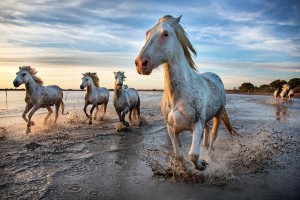 I got back recently from my White horses of the Camargue workshop in the South of France and there were a few things that we had to make sure everyone was paying attention to: their shutter speeds and also their aperture. Shooting these magnificent creatures for many years, you realize that both of these settings are critical to end up with great photographs.
I got back recently from my White horses of the Camargue workshop in the South of France and there were a few things that we had to make sure everyone was paying attention to: their shutter speeds and also their aperture. Shooting these magnificent creatures for many years, you realize that both of these settings are critical to end up with great photographs.
For fast-moving subjects like these horses, you have to figure out what is the best shutter speed to capture them in motion if you want to freeze them while they are moving fast. For these white horses, a shutter speed of 1/1250th of a second works perfectly and did a great job at freezing them without any blur.
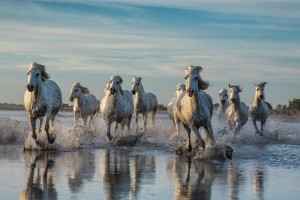
However, when asking your camera to give you that fast of a shutter speed, it might not want to give you a stopped down aperture with a lot of depth of field. When you’re shooting up to 15 horses running right at you, depth of field is critical. So I usually want at least f/8 or higher and most of the time the only way to achieve that is to increase your ISO.
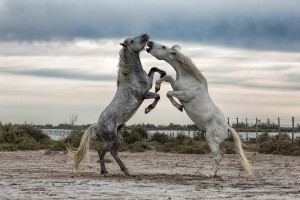
So for most of the images below of the running horses and also when we had them rearing up on two legs, I was at least at ISO 1000 but averaging around ISO 1250 and my f-stop was at least f/8 but was often at f/11. Cranking up for ISO might increase the noise but I will take that increase in noise any day compared to having a blurry subject. Having horses or birds or other fast-moving animals with motion blur in your images is never a nice thing unless you are doing that on purpose, which we also did. Working your ISO to give you the settings that you want is a big key to success with images like this.
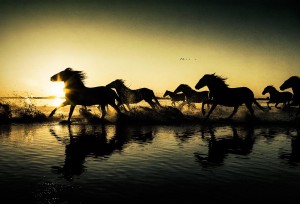
If your subjects are not moving directly at you or away from you, but moving from side to side and you are panning and trying to freeze them, you don’t necessarily need such a high ISO and for the last two images on the bottom I used an ISO of 500. I was also shooting more into the sun and that made a difference. But working that ISO is what you need to do when the situation calls for it. The difference can be huge! Blurry animals aren’t attractive and finessing your cameras’ settings can can make a good shot…. a great shot!
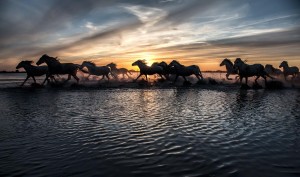
– BPSOP Instructor: Scott Stulberg
Scott Teaches:
Eye to Eye: Capturing the Face










